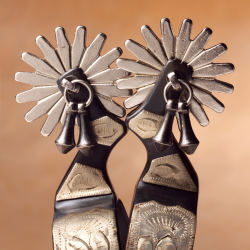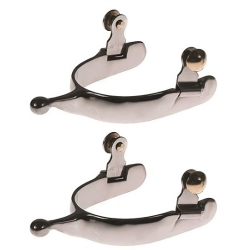Horse riding enthusiasts know the importance of having the right gear and equipment. And when it comes to long rides or trail adventures, one of the essential items for any rider is a horse saddlebag. These versatile bags not only provide convenient storage for all your essentials but also add a touch of style to your riding experience.
In this comprehensive guide, we will dive into the world of horse saddlebags, covering everything you need to know about their selection, use, and maintenance. Whether you're a seasoned rider or just starting out, this guide will equip you with the knowledge and tips to make the most out of your saddlebags.
We will begin by exploring the various factors to consider when choosing the right saddlebags for your needs. From size and capacity to durability and design, we'll help you navigate through the multitude of options available in the market. We will also discuss the different types of saddlebags and the pros and cons of each, allowing you to make an informed decision.
Once you have your saddlebags, we'll guide you on their proper use. You'll learn how to effectively pack your saddlebags, ensuring that you have all the essentials without compromising the balance and comfort of your horse. We'll also share tips on securing the saddlebags to prevent any unwanted movement during your ride.
Maintenance is crucial to ensure the longevity and functionality of your saddlebags, and we'll provide you with a step-by-step guide on how to inspect, clean, and repair them. You'll learn the best cleaning techniques based on the material of your saddlebags and discover how to handle wear and tear effectively.
Lastly, we'll discuss the importance of proper storage for your saddlebags. We'll explore different storage locations, share tips on protecting your saddlebags from moisture and pests, and provide long-term storage tips to keep them in optimal condition.
Whether you're a leisure rider, a competitive equestrian, or simply someone who enjoys exploring trails on horseback, having a comprehensive understanding of horse saddlebags is essential. So, join us on this journey as we delve into the world of horse saddlebags, equipping you with the knowledge and expertise to choose, use, and maintain them effectively.
Understanding Horse Saddlebags: An Overview
Horse saddlebags are an essential accessory for riders who need to carry supplies, gear, or personal items during their rides. They are designed to attach to the saddle and provide storage space, allowing riders to have their essentials conveniently within reach. Saddlebags come in various sizes, styles, and materials to cater to different riding needs and preferences.
Understanding the purpose and functionality of horse saddlebags is crucial before delving into the selection, use, and maintenance aspects. By gaining a comprehensive overview, riders can make informed decisions and maximize the benefits of using saddlebags.
The Importance of Horse Saddlebags
Saddlebags serve multiple purposes for riders. They provide convenient storage for items such as water bottles, snacks, maps, navigation tools, first aid kits, extra clothing, and even camping gear for longer rides. By having these essentials readily accessible, riders can focus on their journey without worrying about carrying extra backpacks or burdening their horses with excessive weight.
Moreover, saddlebags contribute to the overall balance and weight distribution on the horse. Placing items evenly on both sides of the saddle helps maintain stability and prevents discomfort for the horse. Additionally, saddlebags can enhance the aesthetics of the horse and rider, adding a touch of style and functionality to their appearance.
Types of Horse Saddlebags
There are various types of saddlebags available, each designed to cater to specific needs and preferences. Some common types include:
-
Pommel Bags: These saddlebags attach to the front of the saddle, over the pommel. They are typically smaller in size and provide easy access to essentials.
-
Cantle Bags: Cantle bags are attached to the rear of the saddle, over the cantle. They are larger in size and offer more storage capacity. Cantle bags are commonly used for longer rides or overnight trips.
-
Horn Bags: As the name suggests, horn bags are attached to the saddle's horn. They are usually small in size and are ideal for carrying small items like phones, cameras, or snacks that require quick access.
-
Saddlebag Sets: Saddlebag sets include a combination of pommel bags, cantle bags, or horn bags. These sets provide riders with versatile storage options and are suitable for various riding purposes.
Materials Used in Horse Saddlebags
Saddlebags are made from different materials, each with its own advantages and considerations. Common materials include:
-
Leather: Leather saddlebags are durable, stylish, and provide a classic look. They require regular maintenance, conditioning, and protection from moisture to ensure longevity.
-
Synthetic Materials: Nylon, polyester, or other synthetic materials are popular choices for saddlebags. They are lightweight, easy to clean, and often come with water-resistant properties. However, they may not offer the same level of durability as leather.
-
Canvas: Canvas saddlebags are known for their durability and ability to withstand rough conditions. They are often treated with water-resistant coatings, making them suitable for outdoor riding.
Understanding the types of saddlebags and materials available allows riders to choose the most suitable option based on their needs, riding style, and personal preferences. In the next section, we will delve deeper into the factors to consider when selecting horse saddlebags.
Choosing the Right Horse Saddlebags
Choosing the right horse saddlebags is crucial to ensure that they meet your specific needs and preferences. With a wide variety of options available in the market, it's essential to consider several factors before making your selection. In this section, we will explore the key considerations when buying horse saddlebags and provide you with the necessary information to make an informed decision.
Factors to Consider When Buying Saddlebags
-
Size and Capacity: Determine the amount of storage space you require based on the items you plan to carry. Consider the length of your rides and the essentials you need to have on hand. Saddlebags come in different sizes, ranging from small pouches to larger bags that can accommodate camping gear for overnight trips.
-
Durability: Look for saddlebags made from high-quality materials that can withstand the rigors of riding. Ensure that the stitching is strong, and the materials are resistant to wear and tear. This is especially important if you frequently embark on long rides or ride in rough terrains.
-
Accessibility: Consider how easily you can access the contents of the saddlebags while riding. Some saddlebags offer quick-release buckles or zipper closures, allowing for convenient access to your items without dismounting or interrupting your ride.
-
Attachment Method: Check the attachment system of the saddlebags to ensure they are compatible with your saddle. Common attachment methods include straps, buckles, or hook-and-loop fasteners. Ensure that the attachment is secure and won't interfere with your riding experience.
-
Weight Distribution: Opt for saddlebags that distribute weight evenly on both sides of the saddle. This helps maintain balance and prevents discomfort for your horse. Uneven weight distribution can lead to an uncomfortable riding experience and potentially harm your horse's back.
-
Weather Resistance: Consider the weather conditions you typically ride in and choose saddlebags that offer adequate protection against moisture. Look for materials that are water-resistant or include additional rain covers to keep your belongings dry during unexpected showers.
-
Style and Design: While functionality is key, you may also want to consider the style and design of the saddlebags. Choose a design that complements your overall riding gear and personal aesthetics. Saddlebags come in various colors, patterns, and styles, allowing you to express your unique taste.
By considering these factors, you can narrow down your options and find saddlebags that align with your specific needs and preferences. In the next section, we will delve into the different types of saddlebags available, providing you with a comprehensive understanding of each type and their respective advantages.
Proper Use of Horse Saddlebags
Once you have selected the right horse saddlebags, it's important to understand how to use them properly. Proper use ensures that you maximize their functionality, maintain the balance and comfort of your horse, and keep your belongings secure during your ride. In this section, we will explore the essential aspects of using horse saddlebags effectively.
How to Pack a Saddlebag Effectively
-
Organize your items: Before packing your saddlebags, organize your items in a logical manner. Categorize them based on their use or importance. This will help you locate items easily when needed.
-
Distribute weight evenly: It's important to distribute the weight evenly on both sides of the saddle. Place similar items in each saddlebag to maintain balance. For example, distribute water bottles, snacks, or first aid supplies evenly between the bags.
-
Pack heavier items closer to the saddle: To maintain stability, pack heavier items closer to the saddle. This helps distribute the weight more efficiently and prevents the saddlebags from sagging or causing discomfort to your horse.
-
Use padding for delicate items: If you have fragile items such as cameras or glasses, consider using padding or protective cases to prevent them from getting damaged during the ride. You can use soft cloths, bubble wrap, or specialized protective cases for this purpose.
-
Secure loose items: Ensure that items inside the saddlebags are securely packed to prevent them from shifting or falling out during the ride. Use zippered compartments or small bags within the saddlebags to keep smaller items organized and secure.
Balancing Weight in Saddlebags
Maintaining proper weight distribution in your saddlebags is crucial for the comfort and well-being of your horse. Here are some tips to help you achieve a balanced load:
-
Regularly check for balance: Before and during your ride, check the saddlebags to ensure they are evenly loaded. Adjust the items if necessary to maintain balance.
-
Consider your horse's comfort: Pay attention to your horse's movements and reactions during the ride. If you notice any signs of discomfort or imbalance, stop and redistribute the weight in the saddlebags accordingly.
-
Adjust as needed: As you consume items during the ride, the weight distribution may change. Periodically check and adjust the contents of the saddlebags to maintain balance.
Securing Saddlebags for Safe and Comfortable Riding
Properly securing your saddlebags is essential to avoid unwanted movement or shifting during your ride. Follow these guidelines:
-
Use secure attachment methods: Ensure that the saddlebags are securely attached to your saddle using the appropriate attachment methods. Double-check the straps, buckles, or hook-and-loop fasteners to make sure they are tight and stable.
-
Avoid overloading: Do not overload the saddlebags beyond their recommended capacity. Overloading can cause strain on the attachment points and increase the risk of the saddlebags coming loose during the ride.
-
Regularly check for stability: Periodically check the saddlebags during your ride to ensure they remain stable. If you notice any signs of shifting or looseness, stop and readjust the attachment to maintain stability.
By following these guidelines, you can ensure that your saddlebags are packed effectively, weight is balanced, and they are securely attached, allowing for a safe and comfortable riding experience. In the next section, we will discuss the maintenance and cleaning of your horse saddlebags to keep them in optimal condition.
Maintaining and Cleaning Your Horse Saddlebags
Proper maintenance and regular cleaning are essential to keep your horse saddlebags in optimal condition. By taking care of them, you can extend their lifespan, ensure their functionality, and maintain their appearance. In this section, we will provide you with a comprehensive guide on how to maintain and clean your horse saddlebags effectively.
Routine Inspection for Wear and Tear
Regularly inspecting your saddlebags for wear and tear allows you to identify any potential issues early on and take appropriate measures. Here are some key points to consider during your routine inspection:
-
Check the stitching: Examine the stitching on your saddlebags to ensure it is intact and strong. Look for loose threads or any signs of unraveling. Reinforce or repair any weak stitching to prevent further damage.
-
Assess the material: Inspect the overall condition of the saddlebag material. Look for any signs of cracking, fading, or discoloration. Check for any holes or punctures that may compromise the bag's functionality.
-
Examine the attachments: Inspect the attachment points, such as straps, buckles, or fasteners. Ensure they are secure and in good working condition. Replace any worn-out or damaged attachments to maintain the stability of the saddlebags.
Cleaning Techniques Based on Material
The cleaning method you choose for your saddlebags depends on the material they are made from. Here are some cleaning techniques for common saddlebag materials:
-
Leather Saddlebags:
-
Remove any dirt or debris using a soft brush or cloth.
- Use a leather cleaner specifically designed for equestrian gear.
- Apply the cleaner to a damp cloth and gently wipe the saddlebags.
- Rinse off any residue with a clean, damp cloth.
- Allow the saddlebags to air dry, away from direct heat or sunlight.
-
Condition the leather with a suitable leather conditioner to keep it supple and prevent cracking.
-
Synthetic Saddlebags:
-
Wipe down the saddlebags with a damp cloth to remove any dirt or stains.
- Use mild soap or a synthetic material cleaner to clean the surface.
- Gently scrub the saddlebags using a soft brush or cloth.
- Rinse off any soap residue with clean water.
-
Allow the saddlebags to air dry.
-
Canvas Saddlebags:
-
Brush off any loose dirt or debris from the saddlebags.
- Spot clean any stains using a mild detergent and a soft brush.
- Rinse the saddlebags with clean water to remove any detergent residue.
- Hang the saddlebags to air dry.
Repairing Damaged Saddlebags
If your saddlebags have minor damages or wear, you can often repair them yourself. Here are some common repairs you can undertake:
-
Patching small holes: Use a patch or adhesive specifically designed for the material of your saddlebags to cover small holes or tears.
-
Restitching: If the stitching on your saddlebags is loose or damaged, restitch it using a strong thread and needle. Make sure to reinforce the stitching to prevent further unraveling.
-
Reinforcing attachment points: If the attachment points are weakening, reinforce them by adding extra stitching or using stronger materials.
Remember, if the damages are extensive or require professional expertise, it's best to consult a saddler or a professional repair service.
By regularly inspecting, cleaning, and repairing your horse saddlebags, you can ensure their longevity and functionality. In the next section, we will discuss the proper storage of your saddlebags to protect them when they are not in use.
Storing Your Horse Saddlebags
Proper storage of your horse saddlebags is essential to protect them from damage and ensure they remain in good condition when not in use. By following the right storage practices, you can prevent moisture buildup, pest infestation, and other potential issues. In this section, we will explore the best practices for storing your horse saddlebags.
Appropriate Storage Locations
-
Clean and dry area: Find a clean and dry area to store your saddlebags. Avoid areas that are prone to moisture, such as basements or damp sheds. Moisture can lead to mold, mildew, and damage to the materials of your saddlebags.
-
Temperature control: Choose a storage location with a stable temperature. Extreme heat or cold can affect the integrity of the materials and compromise the quality of your saddlebags. Avoid storing them in places exposed to direct sunlight or extreme temperature fluctuations.
-
Ventilation: Opt for a well-ventilated area to prevent the buildup of stale air or odors. Good airflow helps maintain the freshness of your saddlebags and prevents any musty smells.
Protecting Saddlebags from Moisture and Pests
-
Use breathable storage bags: Place your saddlebags in breathable storage bags or covers made from natural fibers. These bags allow air circulation while protecting the saddlebags from dust and potential scratches.
-
Avoid plastic bags: Avoid storing your saddlebags in plastic bags, as they can trap moisture and promote the growth of mold and mildew.
-
Silica gel packets: Include silica gel packets or moisture-absorbing products in the storage bags to help control humidity and prevent moisture buildup. This is particularly important if you live in a humid climate.
-
Pest prevention: To protect your saddlebags from pests, consider using mothballs or cedar chips in the storage area. These natural repellents can help deter insects and prevent damage to your saddlebags.
Long-term Storage Tips
-
Clean and dry before storage: Before storing your saddlebags for an extended period, ensure they are thoroughly cleaned and completely dry. Any dirt or moisture left on the saddlebags can lead to mold, mildew, or deterioration over time.
-
Avoid heavy stacking: If you need to stack multiple items, avoid placing heavy items on top of your saddlebags. Excessive weight can cause distortion or damage to the shape and structure of the bags.
-
Regularly inspect: Periodically check your stored saddlebags for any signs of damage, pests, or moisture. This allows you to address any issues promptly and prevent further damage.
By following these storage practices, you can ensure that your horse saddlebags remain in excellent condition during periods of non-use. Proper storage prolongs their lifespan, protects them from damage, and ensures they are ready for your next riding adventure.
With a comprehensive understanding of horse saddlebags, from selection to maintenance, you are now equipped to make informed decisions and care for your saddlebags effectively. Whether you're embarking on a short trail ride or a long-distance journey, your saddlebags will be a reliable companion, providing convenience and style as you explore the world on horseback.












































